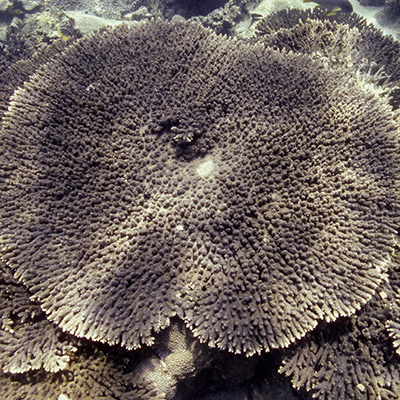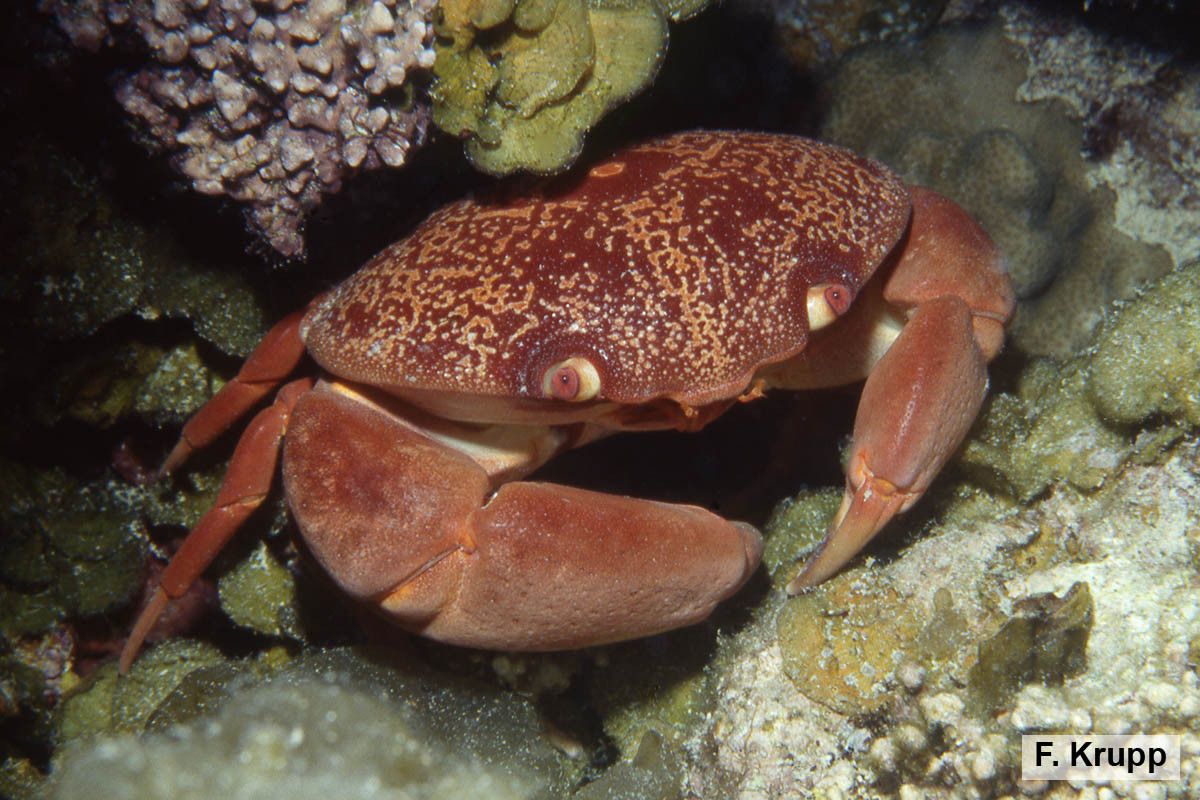Name: Carpilius convexus
Common name: Red Reef Crab, Convex Reef Crab, ( in Arabic: Saratan al-murjan )
Local name:
Scientific name: Carpilius convexus
Classification: Class: malacostracans; order: crabs (Decapoda); family: reef crabs (Carpiliidae)
Size: Specimens usually have a carapace width of 8 10 cm, reaching a maximum of 15 cm.
Habitat:
Red Reef Crabs live on rocky outcrops or coral reefs, dwelling from the lower intertidal to depths of 35 m, where they shelter in crevices or under stones. They are benthic carnivores preying on marine bivalve mollusks of the family Tridacnidae (giant clams). Despite their size, visually attractive coloration and economic potential (the species is taken by divers for the aquarium trade and occasionally collected for food), little is known about their biology. Reports that they are mildly toxic may be due to the fact that they feed on poisonous mollusks.
Distribution:
The species occurs from the east coast of Africa, through the Red Sea and Arabian Gulf to Hawaii, throughout the warmer regions of the Indo-West Pacific, reaching Japan and Australia.
Conservation status:
Carpilius convexus has not yet been assessed for the IUCN Red List of Threatened Species.
Description:
The broad, transversely oval carapace is distinctly convex and has a very smooth dorsal surface with ill-defined regions. Its anterolateral margin is longer than the posterolateral margin, a blunt tooth is present at their junction. The front is deflected downwards, its anterior margin straight in dorsal view, and bears a prominent median lobe that is feebly notched in the middle. The large chelae of the first pair of legs (chelipeds) are smooth, stout and unequal: the major one has a massive palm and fingers with an obtuse tooth near their base, while the minor cheliped is relatively smaller and thinner and without a tooth. The walking legs are thin and smooth, their last segment (dactyl) elongate and slender, with a dark brown cuticular claw at the tip. In males, the abdomen is narrow and elongate, with the third to fourth segments fused, whereas the abdomen of females is oblong. The distinctive coloration, which remains even after preservation, is yellow-orange or red to reddish brown, with irregular patches of dark brown on the dorsal surface of the carapace.








